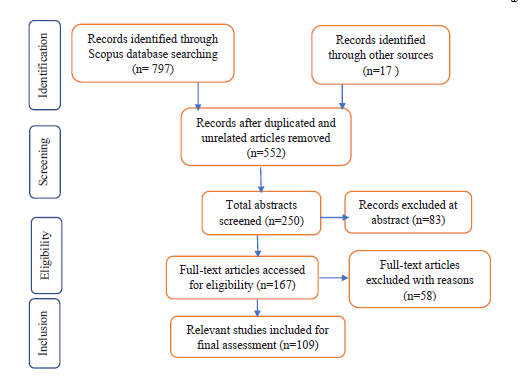Shaping the Energy Landscape of Sub-Saharan Africa: The Role of Energy Planning and Modeling Tools
ENERGY MODELING TOOLSDATA-DRIVEN DECISIONSENERGY PLANNING


Introduction
Sub-Saharan Africa endures crucial problems in the energy sector. Such issues include limited energy access, limited sustainable energy practices, and scare power resources which stands in the way of economic growth and paves the way for environmental deterioration. To tackle these challenges, environmental scientists and engineers rely on energy planning and modeling tools which play a crucial role in positively reshaping the energy landscape of the region. This blog will discuss and provide significant insights into the importance of energy planning and modeling tools in solving the stressful issues of energy security, economic competitiveness, and climate change management in third world countries, particularly in Sub-Saharan Africa (SSA) based on a study published by Akpahou et al. in the Elsevier Journal.
Understanding the Energy Challenges of Sub-Saharan Africa
As a region of developing countries, Sub-Saharan Africa faces crucial obstacles regarding energy access and sustainability. The issue of scarce and expensive and energy sources sets back economic growth and development, while also leading to environmental destruction and with it climate change. To tackle these obstacles, policymakers and stakeholders in SSA-based countries need to make good use of effective energy planning and modeling tools.
The Significance of Energy Modeling Tools in Addressing Energy Security and Economic Competitiveness
Energy modeling tools are necessary for analyzing and estimating energy demand and supply patterns, in addition to recommending possible solutions to ensure energy security, market demand, and climate change management. This study discusses several types of energy modeling tool. The most important of these tools include but are not limited to:
Long-range Energy Alternatives Planning model (LEAP) which is the most conventional engineering modeling tool according to the figure below.
Open Source Energy Modeling System (OSeMOSYS) and EnergyPLAN which are the second most common engineering tools based on the figure below.
Model for Analysis of Energy Demand (MEAD) which is the least common one.
Wien Automatic System Planning Package (WASP) which is not a conventional yet still usable engineering modeling tool
Model for Energy Supply Strategy Alternatives and their General Environmental Impact (MESSAGE) which is the third most conventional engineering modeling tool.
All these modeling tools are deemed to be effective for guaranteeing a better energy security and sustainability for countries in SSA.


Frequency of appearance of (EMTs) in case studies considered (Akpahou et al, 2024)
Implications for Policymakers and Stakeholders in Sub-Saharan African Countries
The research also highlights the significance of choosing the right energy modeling tools that are feasible to developing countries, mainly in SSA. The problem with outdated information and the unique natural characteristics of the area, like the energy situation, weather patterns, and non-formal economy, makes it hard to choose a cohesive energy modeling tool. As a result, this research suggests a structured literature review of energy modeling tools, which include their data requirements, capabilities, and energy environment interactions. In order to make sure that their literature review was deemed to be significant and effective at the proper selection of an engineering modeling tool, researchers have used an aggressive approach known as the PRISMA flow diagram in order to properly extract data and make the right decisions. According to the diagram below, the PRISMA flow chart functions in 4 stages:
Identification: This stage is where researchers will choose a number of records that belong to either a direct source like a database, or an indirect source through other external sources.
Screening: This stage is an iterative process where researchers will duplicate records and delete articles that are not related to their research problem. I would like to call this the first layer of filtering.
Eligibility: This stage is similar to the concept of screening, however it is considered to be an aggressive form of filtering where the researchers will only choose articles that are eligible on set of different criteria.
Inclusion: This is the last stage where researchers finally choose the right articles and select the appropriate data to make data-driven decisions and address their research question.


PRISMA flow diagram for searching and extracting data from the literature (Akpahou et al, 2024)
Conclusion
In conclusion, this study stresses the importance of energy management and modeling tools in shaping the energy landscape of Sub-Saharan African countries. By depending on effective energy modeling tools and methodologies, policymakers and stakeholders can make data-driven decisions that pave the way for sustainable energy development and green economic growth.
Subscribe to our newsletter


